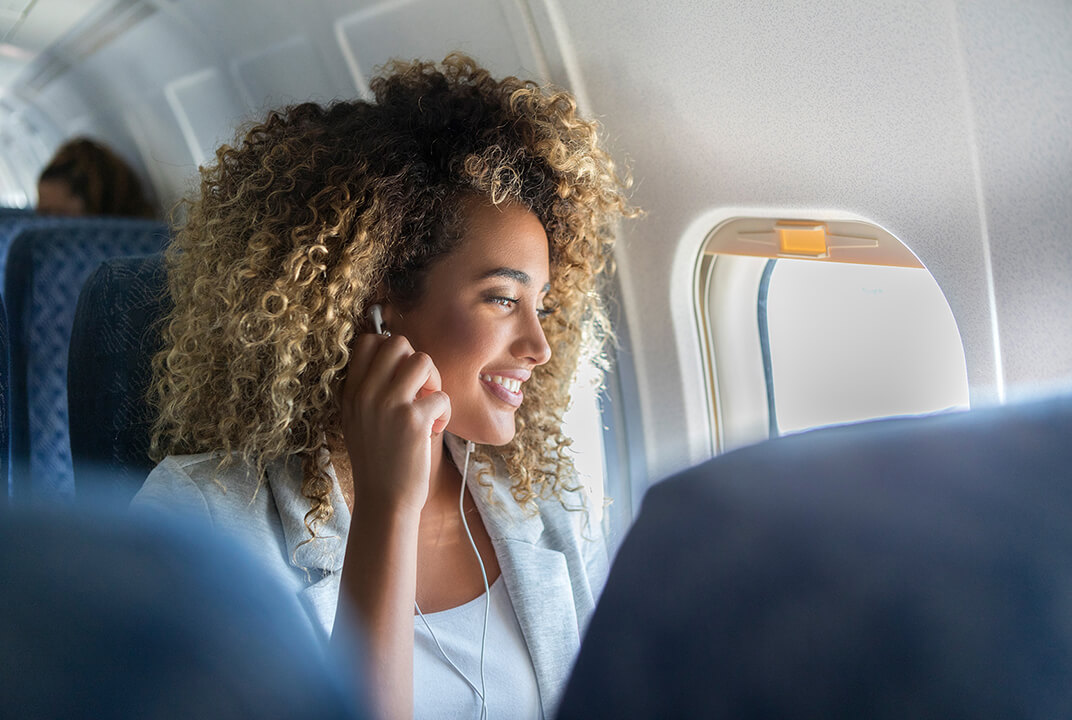Insight | As the aviation industry stabilises, long-term sustainable growth strategies are vital
As the aviation industry stabilises, long-term sustainable growth strategies are vital
null
Airlines need to be more receptive to change and innovation in order to weather the COVID-19 storm, states Inmarsat Aviation’s Chris Rogerson. Here, he offers his thoughts on sustainable growth strategies.
On all fronts, the COVID-19 pandemic has been the greatest challenge of a generation. For many the world has been upended, which, no doubt, will leave lasting marks for years to come. A year into the pandemic, as the global impact on businesses, governments and markets continue to unfold, it is clear that few remain unaffected.
The aviation industry was among the most challenged sectors but it has demonstrated resilience and has charted out its path to recovery. In the initial phase, initiatives have been executed already to make flying viable and safe again – from an overhaul of cleaning protocols to greater social distancing across the passenger journey. Under different circumstances these changes could have taken years to introduce while the next phase will delve even further into the passenger mindset, ensuring that consistent policies, measures and technologies are implemented to restore confidence in airline travel.
Uncertainty breeds hesitation, indecision, and investment slowdowns. With seismic changes underway that will necessitate the writing of a new playbook to navigate the ‘new normal,’ can airlines afford to hold off on making stabilising changes and investments now?
Regain passenger confidence with safety measures
A worldwide survey of industry professionals conducted by Inmarsat revealed that more than two-thirds of those surveyed (69%) do not expect COVID-19 to have a long-term impact on passenger experience investments. The survey was conducted on the sidelines of the company’s industry-leading online broadcast event – ‘FlightPlan: Charting a Course into the Future’ - with the Airline Passenger Experience Association (APEX) last year, when the world was in the thick of lockdown restrictions and travel bans. The survey also found that there was consensus that digital technologies, including real-time data analytics, biometrics and artificial intelligence, will be the biggest drivers of recovery and future profitability growth for airlines.
Connected inflight experiences will become more important as airlines compete to enhance the onboard experience, the need to regain passenger confidence with stringent health and safety standards on touchpoints that are of concern will also be crucial.
Digitalisation lies at the heart of delivering on these requirements. It will help by minimising touchpoints and enhancing safety measures in the passenger experience journey to help regain passenger confidence to fill airline seats while allowing airlines to differentiate themselves. A recent survey by IATA, the global aviation trade association, found that one of the biggest concerns of airline passengers was sitting next to someone carrying the virus and using inflight toilets during the pandemic. Inflight connectivity can enable digital boarding, seating, and toilet queuing systems to reduce concerns and support safe distancing in the cabin. The removal of seatback cards and inflight magazines, replacing them with digital alternatives, is another way to minimise touchpoints while retaining a high passenger experience quality.
While the capability to deliver these facilities already exists and stands ready to be unlocked, there are airlines that are utilising the onboard Wi-Fi services to their advantage. Qatar Airways is one such example, where Inmarsat’s advanced connectivity service across the airlines’ fleet of Boeing 777 and Airbus A350 aircraft has become a popular addition to the airline’s premium five-star onboard experience. This allows passengers to seamlessly browse the internet, stream videos, check social media and shop online during flights.
Keeping passengers connected at 35,000 ft.
Inmarsat’s “Passenger Confidence Tracker” is the world’s largest survey of airline passengers since the pandemic began. It reflected the views and attitudes of 9,500 respondents from 12 countries across the globe about the future of flying. Responses indicated that improving the inflight experience is one way to meet the requirements of airlines’ customers. Value-added services from extra legroom to free baggage, are becoming increasingly important to passengers returning to the skies, with many commenting that onboard Wi-Fi matters more today than ever before.
Digital solutions have become critical to an enjoyable inflight experience and will be unstoppable as flying habits are set to change drastically for the long-term. Alongside the immediate need to regain passenger confidence, airlines will need to adapt to evolving passenger behaviour patterns forged in lockdown.
Across the board, we are all more digitally dependent than ever before. People are spending more time online with users up to three times more likely to connect and stay connected to onboard Wi-Fi than before the pandemic to enhance the inflight experience.
The crisis has accelerated airlines’ digital transformation. This is consistent with McKinsey’s report that businesses have vaulted five years forward in consumer and business digital adoption in just a matter of weeks. Today’s digitally-focused, always-on passengers expect inflight broadband experience comparable to what they enjoy at home or in the office. For airlines, this means having a resilient and reliable high-speed connectivity service onboard for passengers.
Post-pandemic, the top new aspects of the journey passengers want to experience include destination status alerts, real-time luggage tracking and clearing immigration on the plane, all enabled by cabin connectivity.
Monetising connectivity for airlines
The commercial aviation industry’s rebound from the pandemic is already underway. The number of flights is starting to increase gradually. The consensus among aviation experts is that the sector is about three years away from full recovery. An industry poll during the FlightPlan event reveals a sense of optimism in the industry even as it braces itself for a slow recovery.
Today, with the twin challenge of wooing passengers back into the air and load factors limited by social distancing, maximising alternative revenue sources is vital. Digital services present a huge opportunity to bridge the revenue gap. Connected ancillaries are a significant growth opportunity, yet are the least well exploited to date.
One of these ancilliary opportunities is sponsored access, in which a third-party sponsor pays a fee to the airline that covers part or all the operating costs of connectivity in return for access to the airline’s passengers. Alternatively, the airline can choose to subsidise access costs itself – known as ‘airline-sponsored’ – with the expectation that higher take-up rates will unlock comparatively more valuable connected ancillary streams such as e-commerce.
Another revenue opportunity is streaming services. As part of a sponsorship arrangement, a streaming music or movie provider may offer to subsidise passenger Wi-Fi to promote their subscription services. As part of a tiered pricing model, the airline may charge a premium for exclusive streamed content like recent movies, sports events, or live TV.
Connectivity also enables more sophisticated advertising. The rich data that connectivity can deliver allows for well-targeted adverts aimed at a particularly receptive audience, such as destination or passenger specific advertising.
Starting over
The crisis has left aviation and other industries with an unexpected opportunity to start over and reimagine their world. To weather this storm and whatever the challenges that lie ahead, seizing new emerging opportunities, airlines need to be more receptive to change and innovation. Connecting to connectivity is the way ahead in the sky.
About the author
Chris Rogerson joined Inmarsat in 2016 and is now the Vice President of Global Sales, responsible for the Aviation Business’ Market Capture initiatives worldwide. Based in Singapore, Chris was previously the Vice President the APAC team where he ensures the full portfolio of the connected aircraft is adequately served, including both cockpit and cabin products and services.
Prior to joining Inmarsat, across a ten year period in the mobile telecommunications, Chris worked for Telefonica, Millicom and Virgin Mobile Australia in various Strategy, Commercial and Finance roles.”


